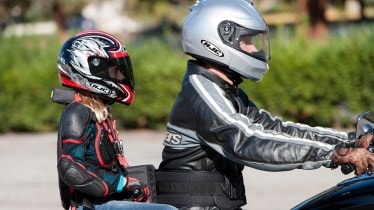By Tarun Kumar Bansal, Director, Safe-O-Kid
With the summer holidays around the corner, it’s time to get the kids out of the house and hit the roads. But is it safe for your child to ride a bike or a car? Are you worried about your kid falling off the seat if you take a sharp turn or if it’s a bumpy ride? Would your kid be able to hold well with their soft grip when the road is rough?
Road traffic injuries are the leading cause of death for children and young adults aged 5-29 years in both developing and developed nations. Therefore, traveling with children is an area of concern for parents, especially as India ranks high in this category.
Furthermore, every year around 10 million kids are injured or disabled as a result of road accidents. For every child killed on the road, there are another 254 children seriously injured, four of whom are permanently disabled, according to recent estimates from South-East Asia. Not only this but a child’s mental health is also affected. The scare from the crash as well as the severity of the injury might contribute to mental health issues. Children are especially vulnerable to injuries due to their tender heads and smaller stature. Losing a life to a tragedy that could have been prevented is deeply scarring and leaves a critical impact psychologically.
This is why road safety is so important and needs to be discussed more. If European countries such as Norway, Sweden, and Switzerland are any indicator, road traffic fatalities can be prevented. They have curbed road accidents to 4 per 100,000 inhabitants compared to 16.6 in India by implementing stringent laws. In December 2014, a noteworthy step was taken in an attempt to reduce road accidents across the European continent. The General Safety Regulations of 2014 introduced effective interventions such as mandatory crash testing, electronic emergency calls, advanced emergency brakes, and more. By regularly implementing policies on engineering, education, and enforcement, as well as the result of applicable laws and institutions, the Republic of Korea reduced the startling 13,429 road traffic deaths in 1991 to just 2%. In addition, they invested in making school zones safer and conducting safety education for children.
By decreeing a law, the Vietnamese government made it a requirement for all motorcycle drivers and passengers, including children, to wear helmets when riding a motorcycle at the end of 2007. As a result, with adequate law enforcement, the percentage of children wearing helmets grew to 56 percent from 2010 to 2013, resulting in fewer head injuries and deaths. Similarly, before driving in the United States, children must be secured in a child safety seat or a booster seat.
These countries have proved that road traffic deaths and injuries can be avoided, saving hundreds of thousands of lives in the process. They emphasized the need for strict rules and better enforcement of those rules, and improvements in road and vehicle safety.
Seeing the rising toll of road accidents each year, the Indian central government decided to take a cue from the developed nations who efficaciously lessened the number of casualties. With the purpose of keeping children safe on the road, the Indian Ministry of Road Transport and Highways mandated the use of a crash helmet and safety belt for youngsters riding as pillion passengers.
According to data from WHO, wearing a helmet correctly lowers the risk of injuries by 42 per cent, head injuries by 69 per cent, and the use of child restraints can result in a 60 per cent decline in deaths. The roads are becoming increasingly dangerous – reckless drivers, unsafe road infrastructure, refusal to follow the rules, ineffective traffic law enforcement, or poor weather conditions – the list of causes for road accidents is limitless. As a parent, it is hard to think about how many children have to suffer before something is done. But it’s time to take action. So, what can you do to make sure your children are safer?
Along with adhering to the government’s traffic rules and regulations, we, as parents, must take the appropriate precautions to ensure the safety of our children. Using the proper safety equipment, whether riding a two-wheeler or four-wheeler, is paramount because as kids get older and their world spreads far beyond our homes, they become acquainted with the dangers and risks of the roads. In the event of a crash, an unrestrained kid is more likely to be fatally harmed. Car seats, booster seats, seat belt shorteners, safety helmets, and an array of products are available in the market to safeguard kids. A car safety seat not only gives your child with comfortable seating for the duration of the drive, but also safely tethers them to the seat. As required by the government, a safety belt will be quite useful while riding on Indian roads.
Parents have so many questions and doubts around child safety gears. A lot of parents are either unaware or are simply skeptical. While the products are not a substitute for adult supervision, they can help mitigate the effects when conditions become dangerous. Our children’s safety is in our hands. Therefore, it is vital to conduct extensive studies to learn what is most comfortable and safe for your child. I implore all parents, expectant parents, and everyone to follow traffic safety standards and take the appropriate precautions. A small amount of compliance can save lives and prevent a catastrophic event from happening.
Disclaimer: The views and opinions expressed in this article are solely those of the original author. These views and opinions do not represent those of The Indian Express Group or its employees.
